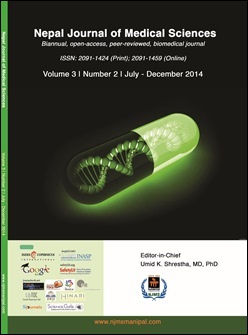Efficacy of using simile completion tasks as a measure to evaluate the figurative language abilities in adolescents aged between 10-15 years
DOI:
https://doi.org/10.3126/njms.v3i2.13454Keywords:
Adolescent, development, figurative, simileAbstract
Background: Language development is an ongoing process. The understanding of figurative expressions such as similes begins during the preschool years with subsequent improvement throughout childhood, adolescence, and into adulthood. Studies pertaining to the development of such higher language skills are limited, especially in a multilingual setup like India.
Methods: Participants were divided into six groups (10-10,11 to 15–15.11 years), with each group consisting of 5 children each. The groups selected for the present study were also classified into the Piaget’s cognitive stages. The participants were required to fill in the incomplete figurative expressions (similes). The responses were recorded. Univariate Analysis of Variance was employed to determine the main significant difference across two variables - chronological group and the cognitive stage.
Results: Results revealed a significant main effect in the means of the accurate responses for the simile completion tasks across the chronological as well as the cognitive groups.
Conclusion: The ability to understand similes follows a developmental pattern, and probably continues to develop even after 15 years. The responses obtained by the participants in the present study improved with age there by suggesting that the amount and quality of knowledge that a child possesses concerning a figurative expression, does play an important role in the child’s comprehension of such higher language aspects.
Nepal Journal of Medical Sciences Vol.3(2) 2014: 110-115
Downloads
Downloads
Published
How to Cite
Issue
Section
License
Copyright © by Nepal Journal of Medical Sciences. The ideas and opinions expressed by authors of articles summarized, quoted, or published in full text in this Journal represents only opinions of authors and do not necessarily reflect the official policy of Nepal Journal of Medical Sciences or the institute with which the author(s) is (are) affiliated, unless so specified.




